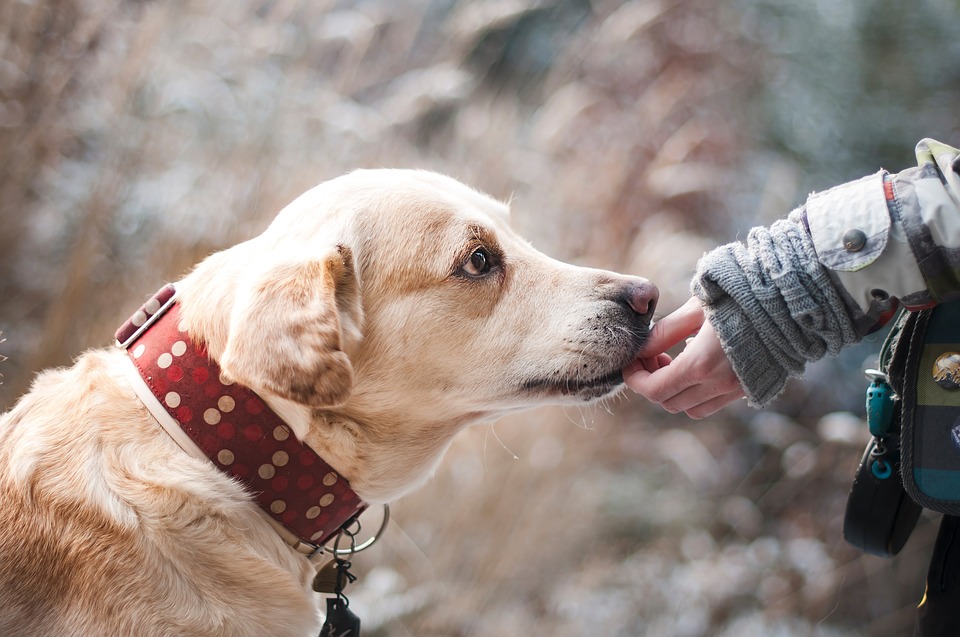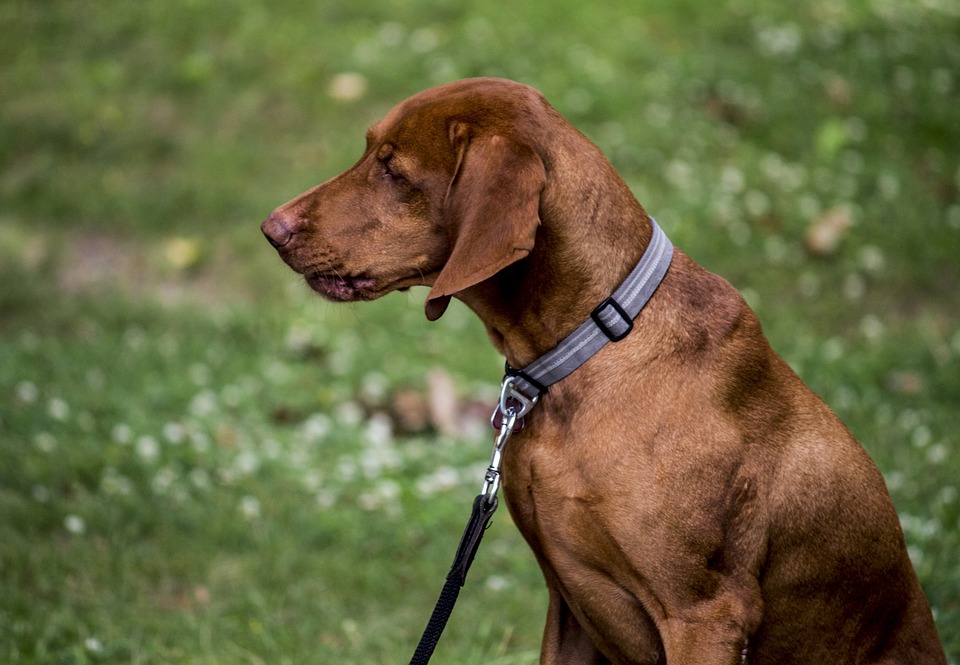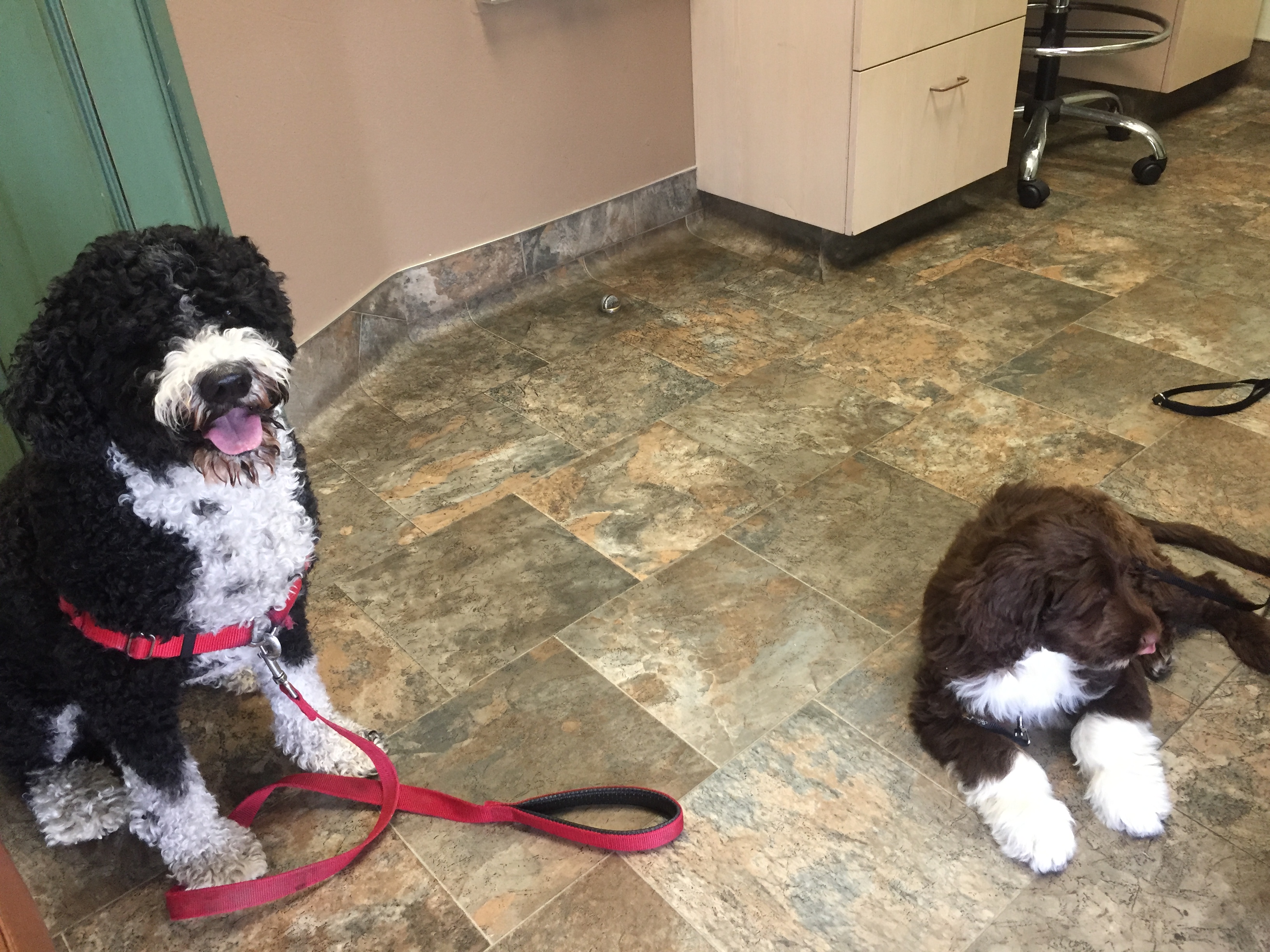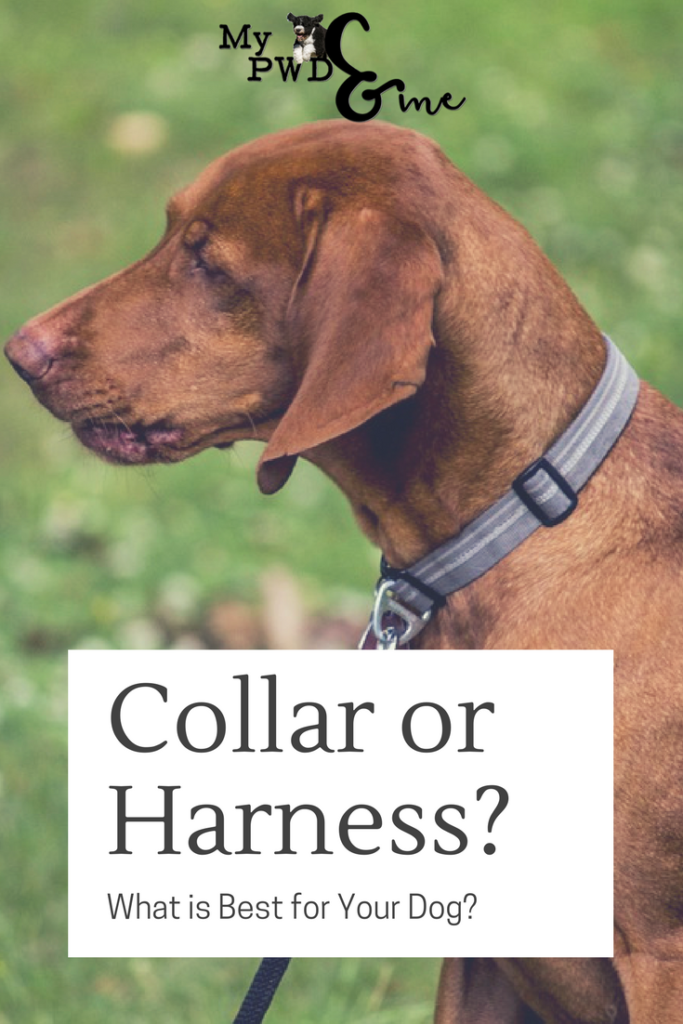Miss Millie and Mr Magoo both have a front clip harness but what is right for your dog? Collar or Harness? There are so many options out there it can be difficult to choose, particularly if you have a new puppy or are having issues with your dog.
There is the camp that says a dog should be on a collar and walk on a loose leash and you shouldn’t need a training aid. Then there is the group that says a front clip harness or traditional harness aren’t training aids and are better for the dog. How do you know what is best?
The answer really depends on your dog. Miss Millie is on a harness because her neck is as big as her head and she can slip out of a collar. And it gives me more control if she sees a dog she doesn’t like or if she gets scared.
Some dogs will be like Millie and need a harness because they can slip out of a collar and that becomes a safety issue. Other dogs who pull a lot may do better on a harness so they don’t injure their neck. In the case of a dog that pulls I would not suggest a traditional harness. That is what sled dogs wear making it easier for your dog to pull you.
What are the different options? What is your best choice, a Collar or Harness?

Traditional Collar
A Traditional Collar is the most typical product dogs use. This either clips or buckles around the neck. The fit should be loose enough that a couple of fingers can fit under the collar. For breeds with short or wide necks collars can be an issue to keep on and may not be a safe choice. I dislike collars for my dogs because they could seriously injure their neck.

Martingale Collar
The Martingale Collar is essentially a cross between a traditional collar and a choke collar. When used properly it is a great collar for dogs that generally walk nicely on a collar but need an occasional reminder. The down fall to this collar is that it can be used incorrectly and still has the risk for neck injuries.
This is a relatively popular option in many circles because of the ability to correct. Personally, I see little difference between this and a choke collar and I don’t encourage the use of corrective punishments. Thus I don’t recommend this to anyone.
Traditional Harness
There are many uses for the traditional harness. Many working dogs and service dogs wear them. Dogs with short or thick necks are safer in the harness than in a collar.

While the traditional harness is popular and much better than a collar for the neck, there is a major downside. A dog’s strongest part of their body is their chest. A traditional harness allows them access to their full strength. With a small dog this isn’t that big of a problem. It is also not an issue if you have a well-trained dog.
Front Clip Harness
The Front Clip Harness is my preference. I was introduced to them by a friend when Miss Millie was a puppy. She had an extra and thought I might like it or at least like to try it. I haven’t gone back to a traditional collar except for some testing we did.

These go around the chest like a traditional harness but instead of the clip being on the back it is on the chest. When they try to pull the leash pulls back on them, encouraging them to stop. It also eliminates the potential for neck injuries.
If you have a leash reactive dog or are just starting loose-leash training these can be an excellent training tool for you. I have so much more confidence walking Millie on her Sense-IBLE harness, you can see it below, and that allows me to do more things with her.
Head Halter
The head halter is my last resort option. If I have tried everything else I will put a head halter on my dog. Molson was trained using one. At the time it was the only positive training tool on the market and thus was my choice. The head halter is perfect for dogs who pull excessively or who are very leash reactive.
The head halter removes the two strongest parts of the dog’s body, their neck and their chest. The downside to the head halter is that it can be put on incorrectly and cause breathing difficulty for your dog. This option also isn’t for short snouts and is not a replacement for a muzzle.
With so many options out there, it is definitely hard to choose. Here are a few questions which might help you in making a decision:
- Does my dog have a specific body need that eliminates options?
- What have I tried in the past?
- Does my dog walk loosely on a leash? Is that a goal of mine?
- Is my dog reactive on leash? Or do I lack confidence when she is on leash?
What is your favorite collar or harness? Did I miss one? Don’t miss out on any of our posts, sign up for our newsletter. Make sure you are following us on social media, you never know what we will be up to.
Disclosure: Please note that some of the links above are affiliate links. In fact, just go ahead and assume that anywhere you see a link, that it’s an affiliate link. There is no additional cost if you decide to make a purchase; We will simply earn a small commission. We will never refer a product or service that we don’t use or have experience with. But don’t take our word for it – do your own research on any products or services to be sure they’ll be a fit for you. If you have questions on any of these, please ask!



